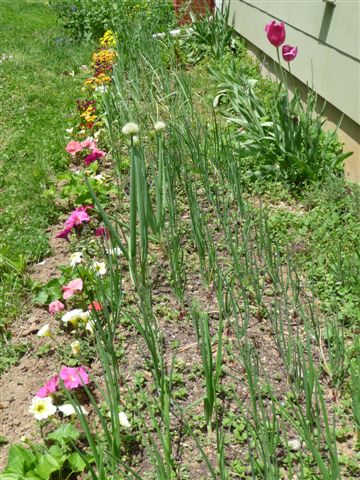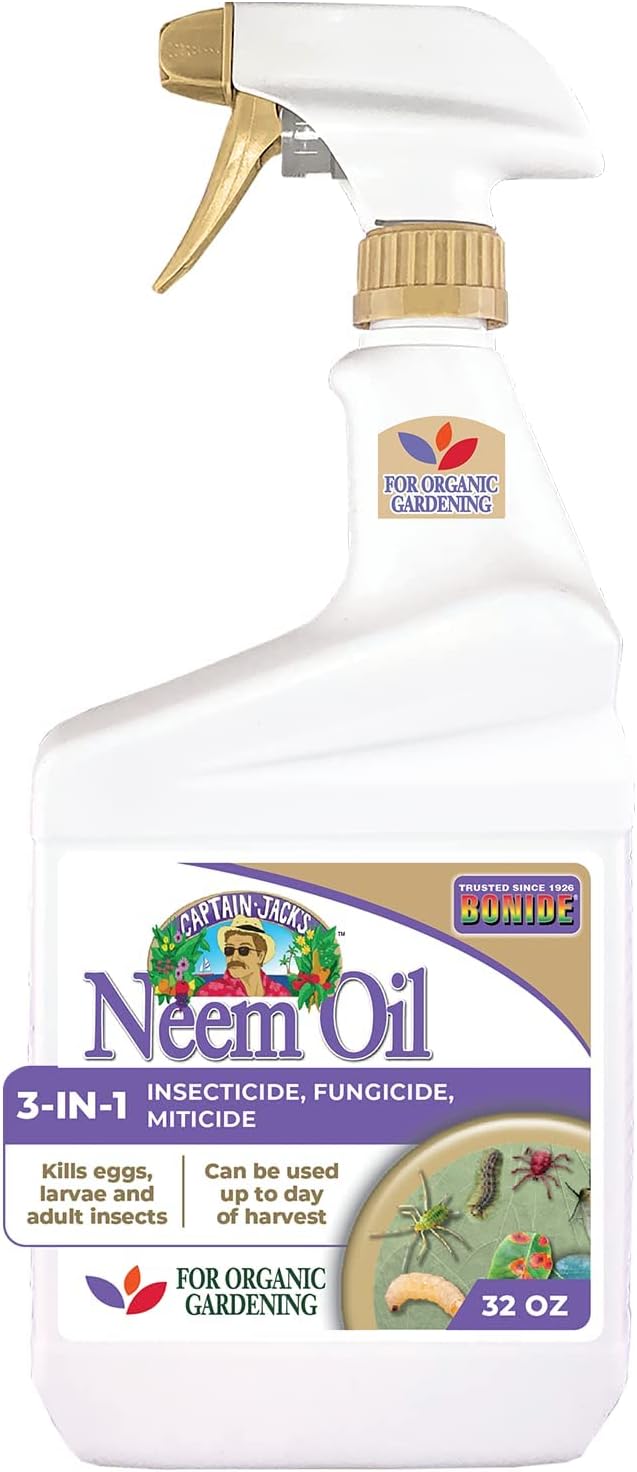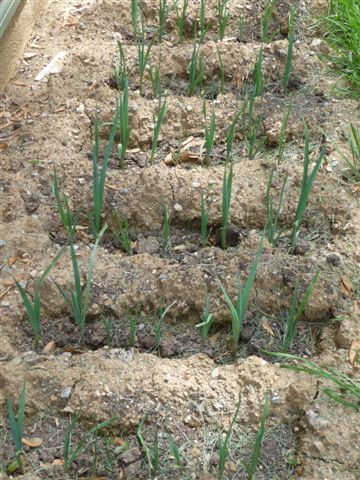Cultivating the Alliums: From Mild to Wild
I’ve grown garlic, onions, leeks, and shallots for many years, and I love all of them

I’ve grown garlic, onions, leeks, and shallots for many years, and I love all of the allium family. I have eaten garlic as hot as a chili pepper and have eaten onions so sweet that I was inspired to use them in desserts. In between being on the road, I garden madly and intensely when I am at home, and about 10 days ago, my husband Tomaso and I put in about 250 onion and leek plants in our Zone 7 Maryland garden. I have a good friend, Deborah Hall, who is a most excellent and intensive gardener. When I told her that all of her fingers were green, not just her thumbs, she looked down at here hands and said “No, they are brown.” And indeed they were, covered with earth. Deborah shares her sown-from-seed plants with me, and I am a happy recipient of anything that she grows. Many of the allium photos in this article were taken in her gardens. I also have a local farm next door to our property, where another gardening friend and businesswoman, Denise Sharp, grows plants for wholesale customers and retail. I am fortunate to have her as another plant benefactor.
Right now, I am at the Ozark Folk Center in Mountain View, Arkansas, where I have many gardening cohorts. This past weekend, I participated in the annual Lavish Herbal Feast and Spring Extravaganza. We had wonderful food prepared by the Skillet Restaurant here, along with the Committee of 100 and members of the Herb Society of America’s Ozark Unit. The menu featured local-grown produce and even free-range chicken, lots of herbs, and green garlic harvested fresh out of the Kitchen Garden. You can check out the great line-up of speakers and the inspired subjects presented and the menu at www.ozarkfolkcenter.com. One of my programs was on the alliums, and I share some of my handout here. Click here for the delicious coulibiac with leeks, mushrooms, greens, and herbs recipe that was a featured dish on our spring menu.
Introducing the alliums
Bulb onions (Allium cepa), no matter their size, shape, or color, are biennial plants that commonly set seed during their second year. These include storage onions, such as the pungent common yellow, white, and red onions we buy at the grocery; pearl onions; boiling onions; and the flat, small onions that Italians like to pickle and that are usually sold as cipolline. Pearl onions are harvested at ½ to 1 inch in diameter, and boiling onions from 1 to 2 inches in diameter. They may be any variety of bulb onion, planted very thickly and harvested early when they reach the desired size. Fresh, sweet onions are often named for places where they are grown, such as Maui, Texas Sweet 1015, Vidalia, and Walla Walla. As the name implies, fresh onions do not store well over a month or two because of their high water content and fairly low sulfur content, which is what makes them sweet. Growers of these use controlled-atmosphere cooling units to extend their market season, but the home cook and gardener should count on the onions as seasonal and rather perishable.
Scallions (A. fistulosum) are also called green onions or spring onions, depending upon where you live. Seed catalogs list them as bunching onions and bulbless Japanese, Chinese, or Welsh onions. There are red and white cultivars, though we mostly see the white varieties; sometimes the red can be found at farmers markets. Though they are available year-round, their peak season is spring. Supermarket scallions or green onions may also be varieties of bulb onions, harvested when immature and before the bulbs begin to swell. To know whether you have true scallions or immature bulb onions, cut a green leaf. Leaves of scallions are round; leaves of bulb onions look sort of like a D-shape—flattened with one concave side.
Leeks (A. porrum) are known as the poor man’s asparagus in Wales. Biennials like onions, they produce hard, solid seed stalks from their centers early during their second year. Once this process begins, leeks quickly become tough and flavorless—basically inedible. The extra attention leeks require to cultivate—mounding soil around to blanch them and tending the fields for the four months or more many varieties need to mature—makes them more expensive. Their flavor—fuller, softer, and more subtle than that of onions—is essential to many dishes and can enhance many others.
Garlic (A. sativum) is an easy crop to grow, and there are many wonderful types from which to choose. It should be planted in cool areas about six weeks before the ground freezes, or in warmer climates in late fall. The cloves will sprout if it is very warm. They like a dormant season, and then they will sprout in the spring. Like the rest of the onion family, they like to be kept free of weeds and to be fertilized every three weeks or so. When about half of their tops start to wilt and fall over, it is time to harvest. Dig them so their tops don’t break off, and allow them to cure in indirect sunlight for two weeks before braiding or storing in mesh bags.
Shallots (A. cepa var. aggregatum) and their very close relatives the potato onions are perennials. If left unharvested, they overwinter and begin to grow and divide the next spring. This feature gives them the name multipliers. Potato onions are more rounded in shape, but the main taxonomic difference is in the leaf-sheaths of the plants; leaves of the potato onion grow together in one sheaf, while shallot leaves have individual sheaves. Both come in red, yellow, and white cultivars. The main difference is in the flavor. Shallots have a more complex flavor, particularly the teardrop-shaped types such as frogs’ leg and French grey, and they are less pungent than potato onions.
Alliums in the garden
Onions require a little more attention than some garden crops, but once you discover how many varieties are available to the gardener, but not to the shopper, you will be tempted to try them out. Leeks require hilling with soil or compost to obtain the best flavor and yield of white stalk, but this is not much of a task. I have found that garlic and shallots are the easiest of all the alliums; like leeks, they offer some monetary savings as well as superior flavor. Scallions are the perfect choice for those who want a quick and easy onion crop.
Since the plants have very shallow root systems, fertile, well-drained, and well-worked soil is necessary to onions, leeks, scallions, garlic, and shallots. If you don’t have loamy soil, add very liberal amounts of compost or humus. This needs to be worked in 6 to 12 inches deep for these allium crops. Drainage is important to prevent underground mold, rot, and fungus. Loose and friable soil structure for good drainage is the same that fosters formation of large bulbs. Both clay and sandy soil will need to be worked to this optimum allium-growing condition.
Alliums like ample nutrients, particularly phosphorus and nitrogen. Commercial onion growers often add 10-20-10 fertilizer to the soil before sowing seed. Use only well-rotted manure as a soil amendment; fresh manure increases the chances of bulb rot. In addition, a neutral to slightly acidic (pH 5.6 to 6.5) soil is best for bulb formation and flavor. Very acidic soil can be amended with lime; alkaline soil can be amended with peat moss, ground bark, or sawdust. For the best results, add all soil amendments two or three months before sowing seed or setting out plants or sets.
Once seedlings reach 3 to 4 inches high, or about two weeks after setting out, the plants should be fertilized lightly every three weeks with a balanced formula. During this time keep the allium patch weeded. The seed shoots are so slender and fragile that it seems unlikely they will become onions, leeks, etc., without your help; they have to struggle to obtain nutrients in the face of weedy competition. Even after the alliums are growing vigorously, keep them well weeded and watered.
Since onions and leeks make their best foliage and feeder root growth during cool, wet seasons, make sure they have plenty of water to keep them cool and able to soak up nutrients. This early growth, whether it takes place in fall or spring, is directly related to how large and well-formed onions will be at harvest. The number of leaves equals the number of layers in the bulbs; the size of the layers is determined by how well the plant is feeding. If you are growing scallions through the summer, keep them well watered; thrips are one of the very few insects that attack onions and scallions, particularly during hot, dry weather. Thrips feed on the leaves, leaving white blotches.
Onions and scallions have very few diseases or insect predators; garlic, leeks, and shallots have virtually none. Still, most experts recommend crop rotation. The more allium family members you have under cultivation and the more space they take, the longer the rotation should be. For commercial growers, two to three years is common.

In most climates, it isn’t too late to plant onions, especially if you like to harvest tender, small green onions. The way time flies, it won’t be long before we’ll be planting our fall crops of garlic, leeks, and shallots! So order seeds to sow in order to have good-size plants grown out by fall.
Fine Gardening Recommended Products

A.M. Leonard Deluxe Soil Knife & Leather Sheath Combo
Fine Gardening receives a commission for items purchased through links on this site, including Amazon Associates and other affiliate advertising programs.

Gardener's Log Book from NYBG
Fine Gardening receives a commission for items purchased through links on this site, including Amazon Associates and other affiliate advertising programs.

Bonide Captain Jack's Neem Oil, 32 oz Ready-to-Use Spray, Multi-Purpose Fungicide, Insecticide and Miticide for Organic Gardening
Fine Gardening receives a commission for items purchased through links on this site, including Amazon Associates and other affiliate advertising programs.

















Comments
Log in or create an account to post a comment.
Sign up Log in